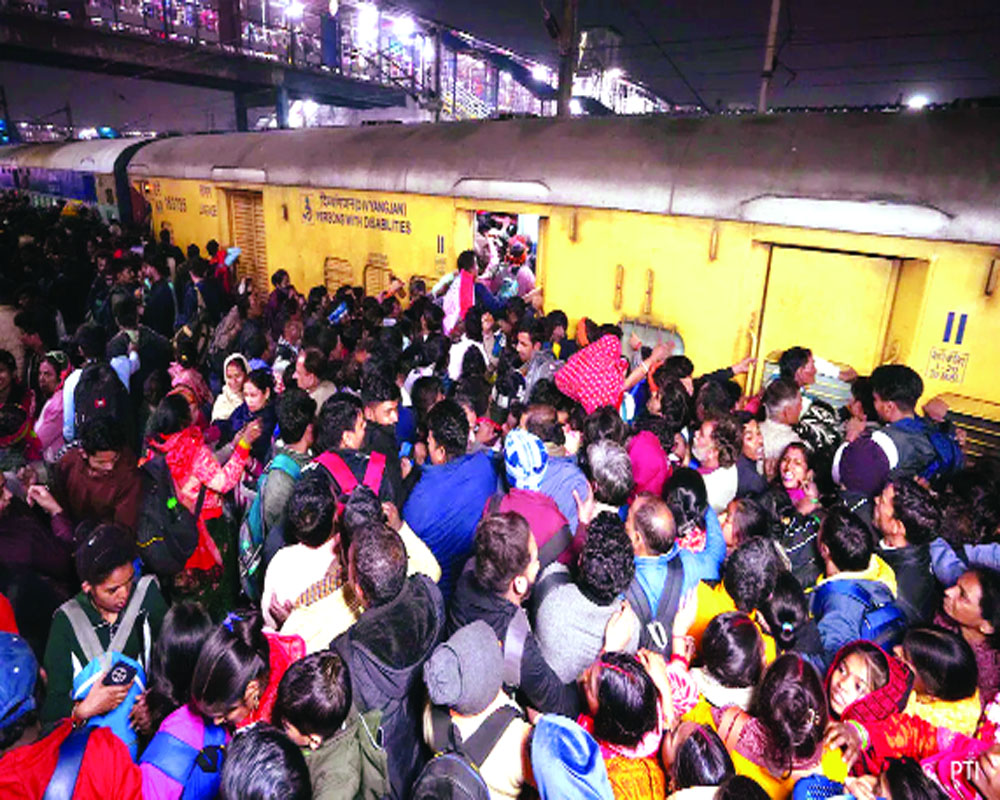The New Delhi Railway Station stampede exposes administrative lapses and highlights the need for better crowd control
It is as heart-wrenching as it is unfortunate. The stampede at New Delhi Railway Station has shocked the Capital. At least 18 people, including five children, lost their lives, and over a dozen sustained injuries in a horrific stampede at the Station on Saturday night. The tragedy unfolded on the foot-overbridges connecting platforms 14 and 15, as a sudden surge of passengers waiting to board trains for Prayagraj resulted in a deadly crush. The incident raises critical questions about mismanagement, infrastructural inadequacies and lapses in crowd control that led to the catastrophe. The primary trigger of the incident appears to be a confluence of factors, including excessive passenger load, misleading announcements and poor crowd management. The surge of pilgrims traveling to Prayagraj for the ongoing Maha Kumbh Mela significantly increased the footfall at the station. Reports indicate that around 1,500 general tickets were being sold every hour. Sources suggest that a wrong announcement regarding a change of platforms may have led to confusion among passengers.
In the ensuing rush, some individuals slipped while descending the foot-overbridge stairs, triggering widespread panic. Besides, extended waiting periods for departing trains may have resulted in a bottleneck effect. While overcrowding was an expected challenge, poor planning and mismanagement turned it into a disaster. Given the predictable surge of passengers, railway authorities failed to deploy adequate personnel to regulate the movement of people. Despite previous incidents highlighting the risks of overcrowding, no significant upgrades had been made to ensure smoother pedestrian movement. Moreover, the response from railway officials and security personnel was reportedly delayed. A more robust system to alert and manage surging crowds could have prevented the incident from escalating into a full-fledged disaster. Could this have been prevented? Surely. Deployment of additional railway police and personnel during peak travel periods could have averted the disaster. Besides, real-time monitoring of passenger density using surveillance cameras and AI-based crowd control systems could have definitely help in such a situations. This stampede must jolt the authorities from their deep slumber as this is not for the first time such a tragedy has happened. Expansion and widening of foot-overbridges to accommodate high passenger traffic must be done on priority. Clear and accurate digital signage to minimise confusion is also very important. Besides, there must be a system to cap the number of the general tickets issued per hour, especially during mega events, While accountability is being fixed, the focus must remain on implementing long-term solutions to prevent such tragedies in the future. The railway authorities must ensure that infrastructure, security and operational protocols are robust enough to handle high footfall scenarios safely.
























